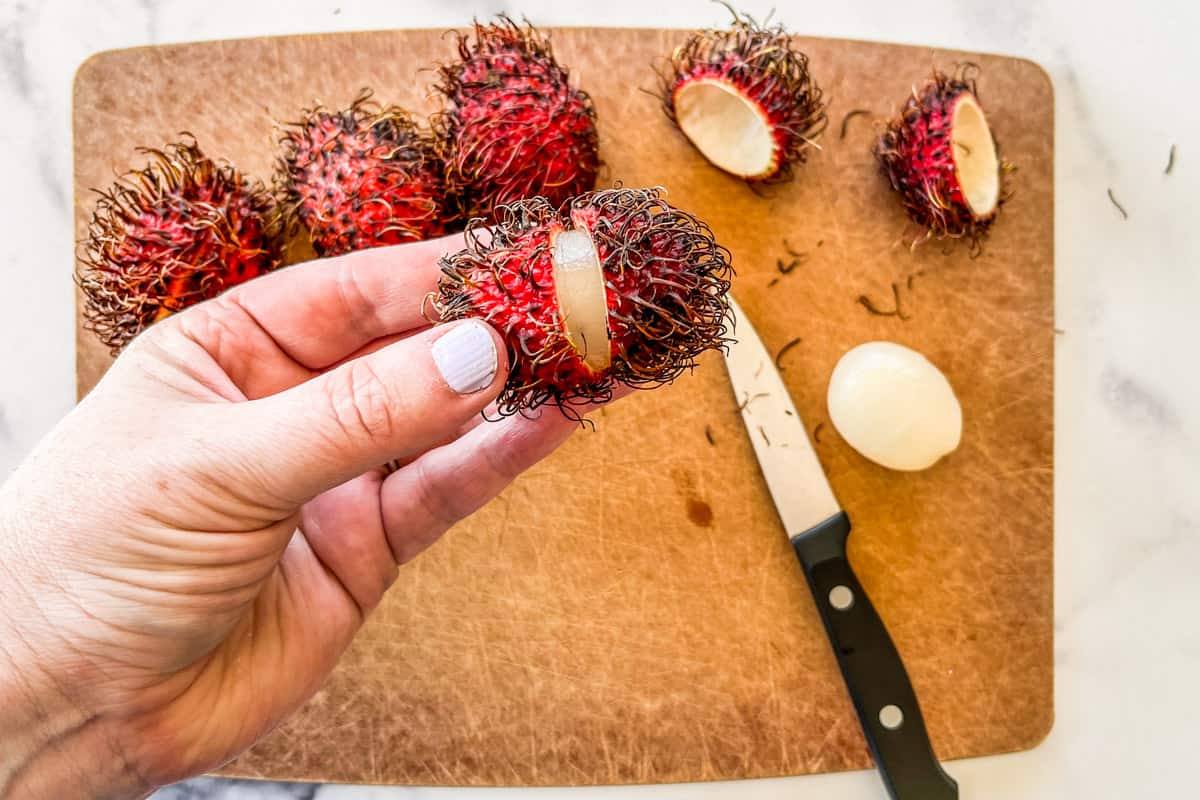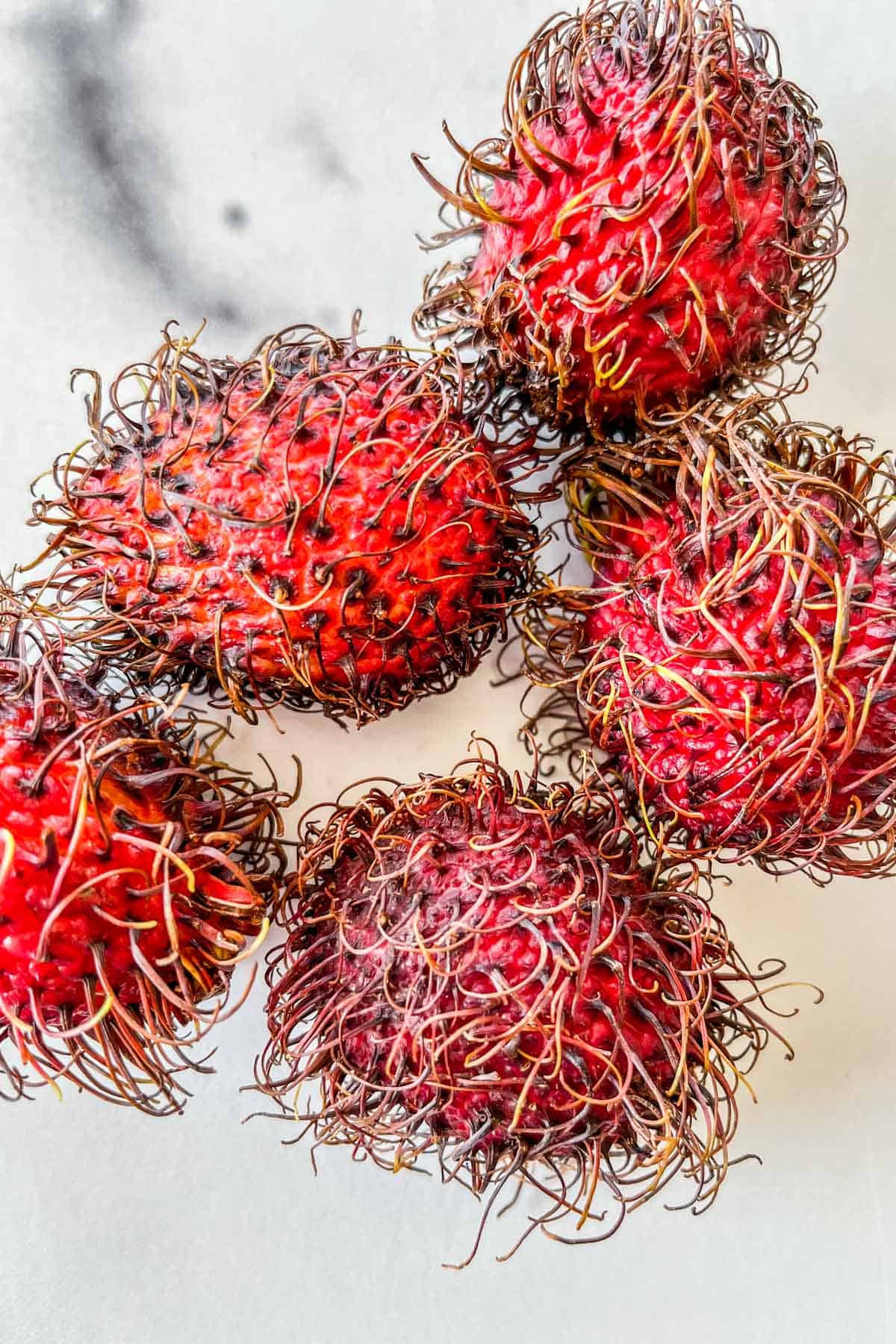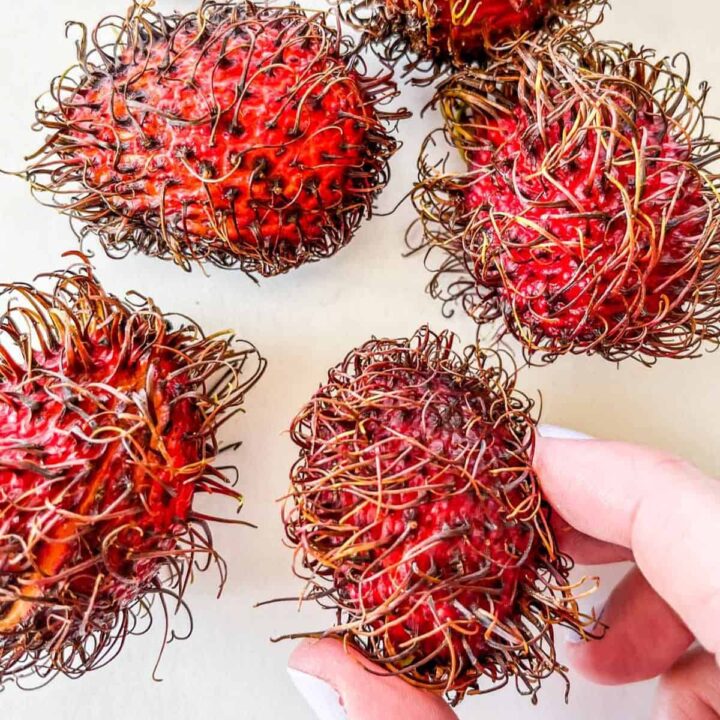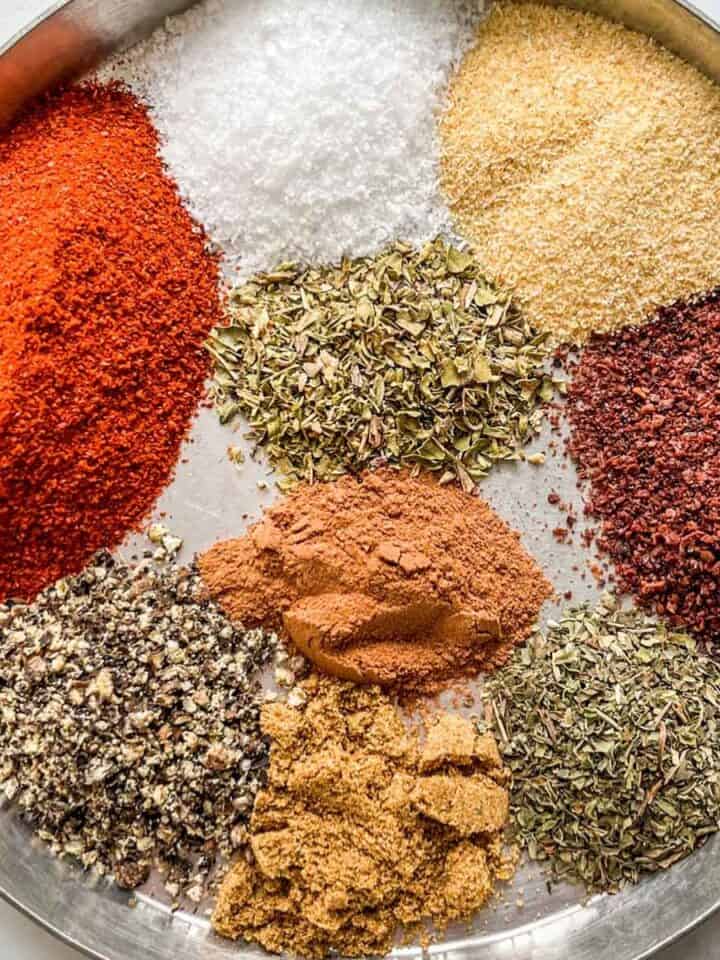Rambutan is a juicy, exotic fruit with bright red hairy skin and a white fruit interior that's fun to eat - it looks a bit alien-like or similar to a sea urchin.
Because of its hairy shell exterior, it may look a little confusing to eat. The spine-like protrusions, called spinterns, look sharp, but they are soft and pliable (and won't poke you). Inside, there's a tasty piece of fruit with translucent white flesh, a large seed, and a sweet flavor.
Rambutan is similar to lychee and longan fruits, with its tough outer peel and translucent flesh interiors.
You may have seen this strange fruit in the grocery store in the summer months and wondered what it is and how to eat it.
I’ll show you how to eat a rambutan as well as answer some commonly asked questions about this fantastic tropical fruit.

The Taste of the Rambutan Fruit
A rambutan tastes a little like a grape with a bit of tartness. It's similar to lychee fruit. Despite its spiky outer skin, the flesh is quite soft and juicy.
If they are overripe, they'll have a sour, fermented flavor.
How to Eat a Rambutan
Once you break through the rambutan exterior, you'll eat the inner edible part of the fruit just as you would eat other fresh fruit. They're delicious on their own, in fruit salads, smoothies, or with yogurt.
Step 1 - How to peel and cut a rambutan
Place the rambutan on a cutting board. Use a sharp paring knife to cut a slit in the center of the rambutan skin.
Continue cutting around the center of the rambutan and pull the fruit's skin away from the top.
Squeeze the base of the rambutan to pop the fruit out.


Step 2 - Cut the rambutan fruit away from the seed
You can pop the rambutan in your mouth and eat it as you would a cherry - by chewing off the flesh of the rambutan and spitting out the seed. But if you plan to use the fruit in a recipe, you want to cut the fruit away from the seed.
To do this, you can press your fingers into the fruit and use your fingers to remove the seed. It will be a bit messy, but it works. Alternatively, you can use a tourné knife (similar to a paring knife, with a curved blade) to make a small incision into the rambutan fruit and carefully cut around the seed, then pop it out.

Rambutan FAQs
If you're still unsure about whether you want to tackle eating a rambutan or have more questions, check out these frequently asked questions about the rambutan.
How do you tell when a rambutan is ripe?
Ripe rambutan has bright red skin. Unripe rambutans will have green skin - they go from green to yellow to orange to red. Rambutans with a little yellow or orange can still be ripe.
You should see yellow or green "hairs" on the skin. If they (or the rambutan peel) have gone black or the skin is black, they are overripe.
The rambutans in the photo below are verging on a little too ripe, but they still taste quite nice!
Is the skin of a rambutan edible?
The skin of rambutans is inedible and should not be eaten. The skin has toxic substances, so please discard the skin (Source).
Where does rambutan grow?
Fresh rambutans grow on the rambutan tree in tropical climates.
Rambutan (nephelium lappaceum) is native to Southeast Asia (primarily in Thailand, Malaysia, Vietnam, and the Philippines).
Because of its hairy exterior, in Vietnam, it's called "chôm chôm", which means "messy hair". The name rambutan is derived from the Thai word rambut, which means hair.
What's the difference between rambutan and lychee?
Rambutan and lychee are typically eaten and used in recipes similarly, but they are not the same fruit. Here are a few of their differences.
Taste - Lychee tends to be more tart than the sweet rambutan.
Appearance - On the inside, a rambutan and lychee fruit look very similar, except lychee is typically half the size of a rambutan. Externally, rambutans have spiky/hairy skin, while lychee skin is bumpy but smooth.
Are rambutans healthy?
There are several health benefits to eating rambutans. They are a good source of folate and potassium, which is vital for heart health and kidney function. They're also rich in vitamin C which helps fight infections and supports your immune system (Source).
Can you eat raw rambutan?
Yes, you can eat raw rambutans - in fact, it's one of the best ways to enjoy them!
Rambutan can be used in ice creams, curries, cocktails, and fruit salad. I don't recommend eating the rambutan seeds, though - they are inedible unless boiled and are quite bitter.
Why is rambutan fruit so expensive?
Rambutan is not a cheap fruit. It ranges from about $8 to $12 a pound (or about 50 cents per fruit) in grocery stores and Asian markets and can be up to $15 a pound at specialty produce markets.
The fruit grows on rambutan trees that take several years to mature before they begin producing. Rambutans grow in humid, tropical countries, but Thailand is the main producer of rambutans.
When is rambutan in season?
The main harvest season for ripe rambutan fruits is in December and January, but there is a second smaller harvest in August and September.

How to Store Rambutan?
You can store rambutan for a few days at room temperature or for up to two weeks in a plastic bag in the refrigerator.
You can freeze rambutan in an airtight container or zip-top bag for up to six months. I recommend peeling before freezing. Freezing can slightly change the texture, but if you plan to use it on ice cream or in smoothies, it will work just fine.

If you try a rambutan, let us know! Connect with us on Instagram and share your photos, leave us a rating or share your best tips!
How to Eat Rambutan Fruit

Here's how to cut and eat a delicious rambutan fruit!
Ingredients
- Ripe rambutan fruit
Instructions
- Place the rambutan on a cutting board. Use a sharp knife to cut a slit in the center of the rambutan.
- Continue cutting around the center of the rambutan and pull the skin away from the top.
- Squeeze the base of the rambutan to pop the fruit out.
- Serve it immediately.





Leave a Reply